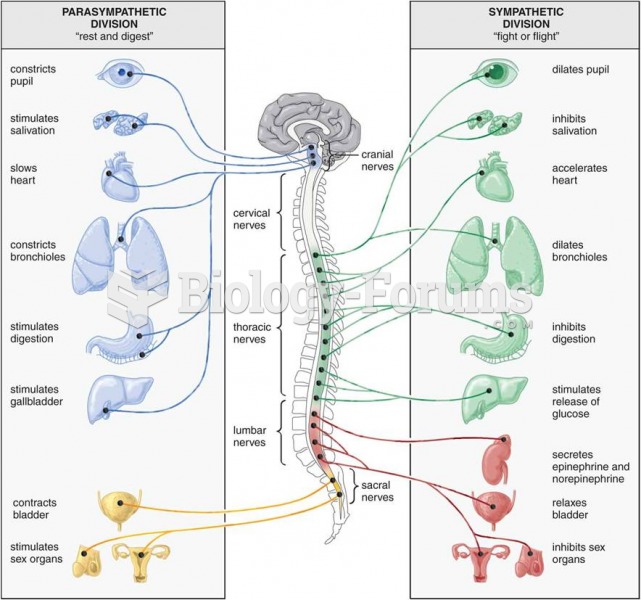|
|
|
All patients with hyperparathyroidism will develop osteoporosis. The parathyroid glands maintain blood calcium within the normal range. All patients with this disease will continue to lose calcium from their bones every day, and there is no way to prevent the development of osteoporosis as a result.
The term bacteria was devised in the 19th century by German biologist Ferdinand Cohn. He based it on the Greek word "bakterion" meaning a small rod or staff. Cohn is considered to be the father of modern bacteriology.
People with high total cholesterol have about two times the risk for heart disease as people with ideal levels.
Thyroid conditions may make getting pregnant impossible.
The calories found in one piece of cherry cheesecake could light a 60-watt light bulb for 1.5 hours.
 Global positioning systems determine latitude, longitude, and altitude by measuring the distance fro
Global positioning systems determine latitude, longitude, and altitude by measuring the distance fro
 The underside of a male (top) and a female (bottom) individual of Pachygrapsus marmoratus, showing t
The underside of a male (top) and a female (bottom) individual of Pachygrapsus marmoratus, showing t





